
Quickly to the right hardware equipment …
Layout, Design and Features
ASRock X299 Taichi Equipment and other features
ASRock X299 Taichi Expansion cards
ASRock X299 Taichi Memory
ASRock X299 Taichi Hard disk drive connectors
ASRock X299 Taichi USB and Firewire
ASRock X299 Taichi Network
ASRock X299 Taichi Sound
ASRock X299 Taichi ATX back panel connectors
ASRock X299 Taichi PC System
Layout, Design and Features …
As already explained in the unboxing video on our OCinside YouTube Channel, this X299 board is build for Intel LGA 2066 Skylake-X and Kabylake-X processors.
Here is the ASRock X299 Taichi unboxing video (English subtitles):
Note: Please allow our cookies first to see this external content!
Here you can see the nice motherboard box of the new ASRock X299 Taichi LGA2066 motherboard with the stylish gears.
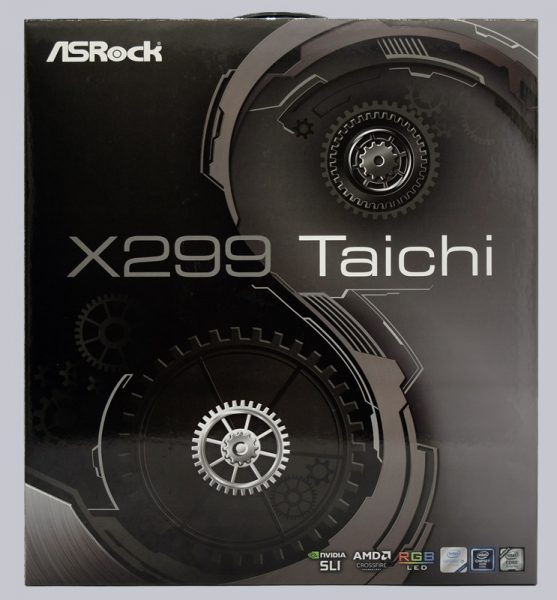
On the back of the packaging you can already see some features like for example WiFi, Dual LAN, 13 Phase Power, BIOS Flashback, USB 3.1 Gen2, Intel Optane support, Hyper BCLK Engine II, 8-Layer PCB, Aura RGB LED and Triple Ultra M.2 Slots.
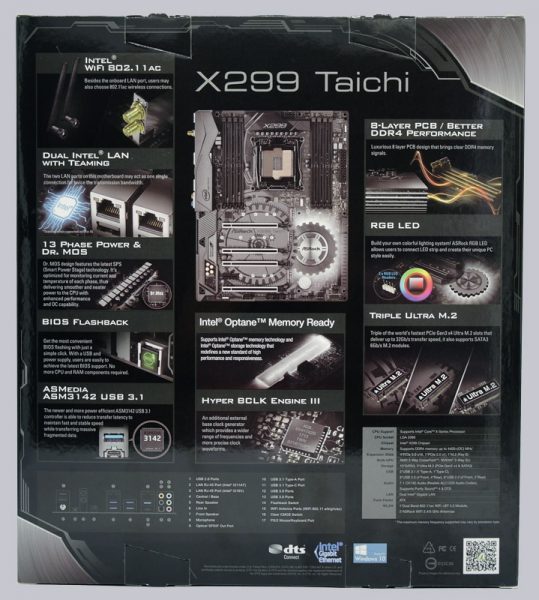
After removing and opening the box we can have a look at the contents.
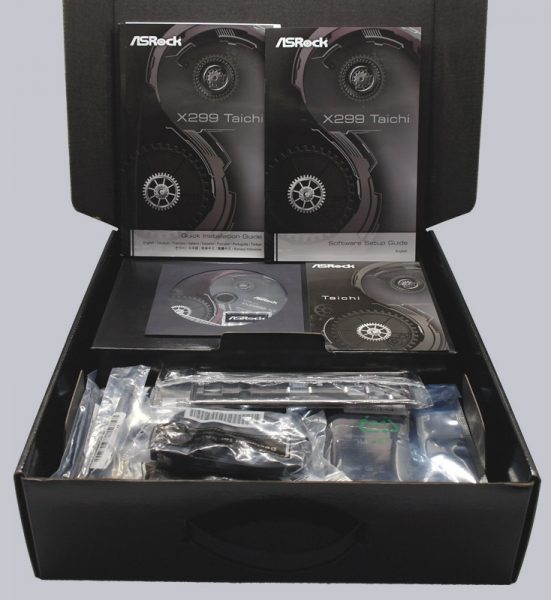
As most high-quality ASRock motherboards, the X299 Taichi is bordered in foam for safe transport.
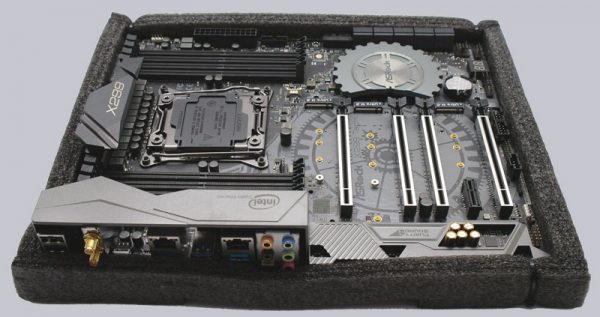
The ASRock X299 Taichi High Density fiber glass Sapphire Black PCB makes a very high quality impression. The motherboard features very durable Nichicon 12K Black Caps, Premium 65A Power Chokes, 13 Power Phase Design, Digi Power, Dual-Stack MOSFET and 7.1 HD Purity Sound 4 over ALC1220 with Nichicon Fine Gold Audio capacitors, 120dB SNR DAC and TI NE5532 headset amplifier.
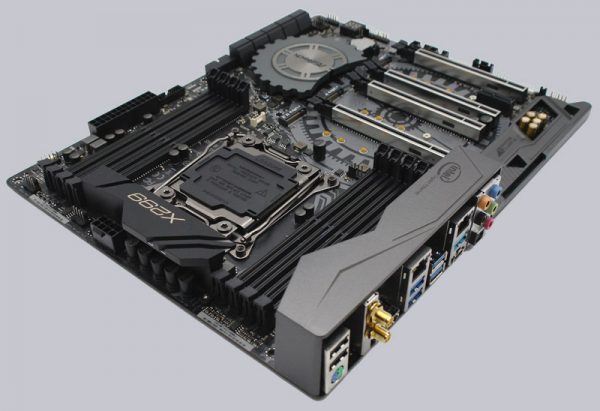
The ASRock X299 Taichi has a Dr. Debug 7-segment LED postcode display and offers three! fast Ultra M.2 slots for PCIe Gen3 x4 modules with up to 32 Gb/sec. bandwidth. The picture shows the new PCIe Steel slot and the three Ultra M.2 sockets, which can be equipped with 2230/2242/2260/2280 M.2 modules as well as one longer 22110 M.2 module.
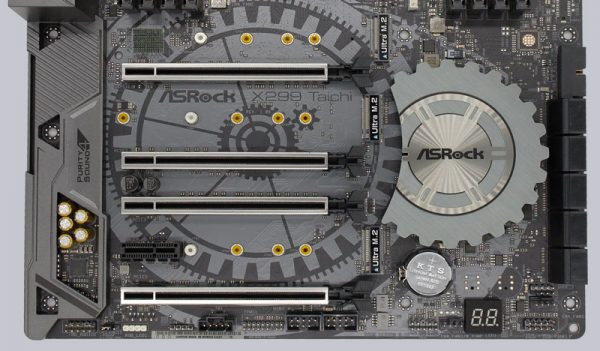
We tested the X299 Taichi with a Crucial MX300 M.2 SSD.
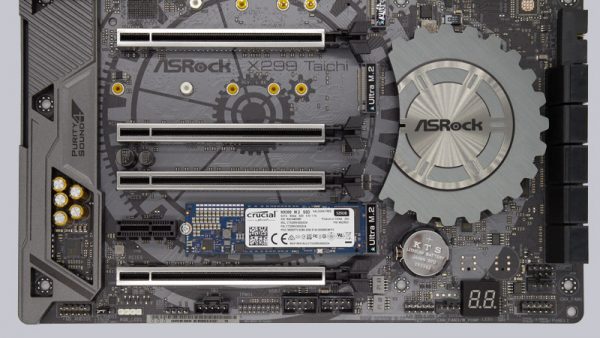
Conventional RGB stripes can be connected to the white 4-pin 12V RGB header, for example to illuminate the housing. In addition, the X299 Taichi has a second 12V RGB LED connector.
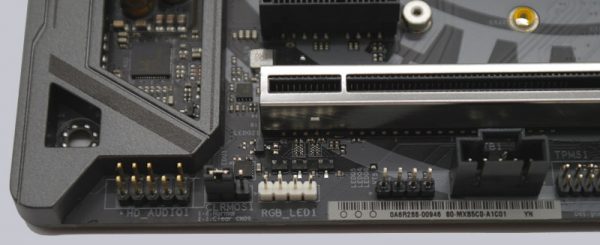
ASRock has integrated the RGB LEDs on this motherboard underneath the chipset cooler, which can be controlled as desired.
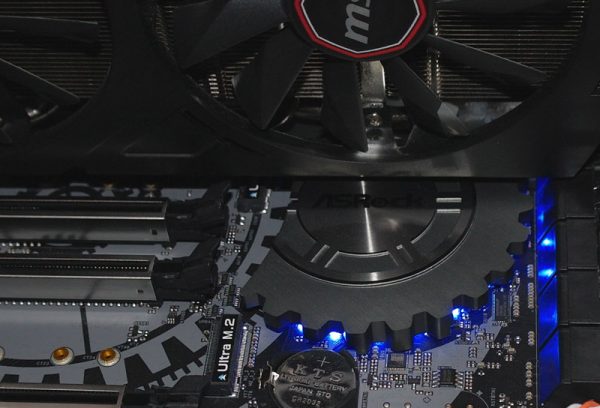
The RGB headers and the integrated RGB LEDs are controlled by the supplied ASRock RGB LED software. As with the ASRock Z270 motherboards, all settings can be made graphically via the UEFI. For example, in the ASRock RGB LED software or in the BIOS you can select the colors in an RGB color selector..
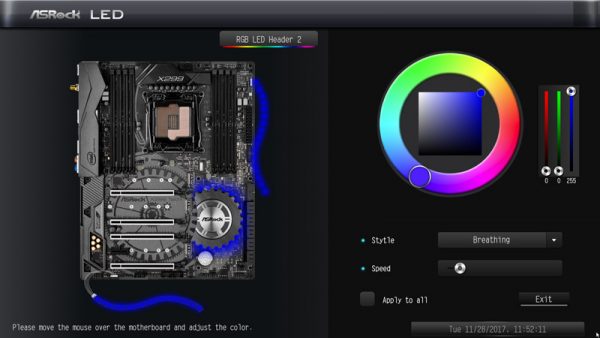
You can also set whether the RGB headers should be controlled separately or together with the RGB lighting under the chipset cooler.
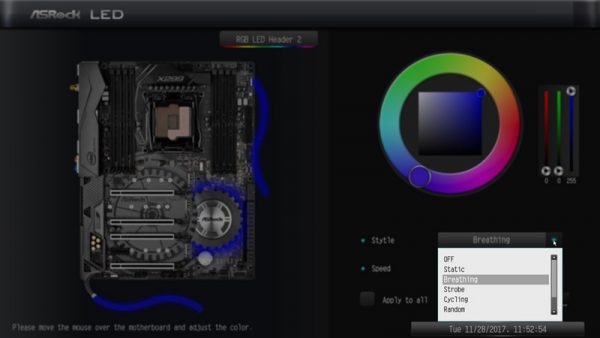
And you can adjust in the ASRock RGB LED menu, if the LEDs should light continuously, breathe, random or even light up to the music. The user has numerous ways how and how fast light up the LED stripes or the chipset cooler LEDs and can of course also completely disable it. Certainly as already mentioned in the previous X370 reviews, that is no “must have” feature, but definitely “nice to have”!
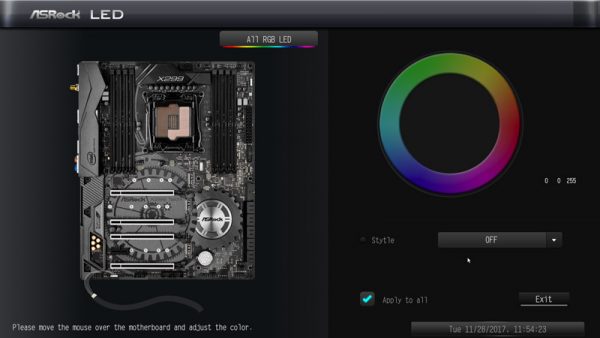
Here you can see one of the two internal USB3.1 Gen1 ports, the 24-Pin ATX power connector, some of the high quality Nichicon 12K Black Caps capacitors, as well as a second RGB Header.

The following picture shows a side view of the motherboard with the protective I/O panel cover (I/O Armor) and the large aluminum alloy XXL heatsink that has been carefully attached on the MOSFETs. The difference between the ASRock X299 Taichi and the ASRock X299 Taichi XE will be shown in the upcoming ASRock X299 Taichi XE review.

Equipment and other features …
The X299 Taichi motherboard from ASRock came with a manual, software setup manual, DVD, four SATA data cables (angled and straight), one ASRock 3-Way SLI-2S1S Bridge card, one ASRock SLI_HB_Bridge_2S card, three screws for the M.2 sockets, two ASRock WiFi 2.4/5 GHz antennas and an ATX I/O cover. Additional USB slot covers or ASRock USB 3.0 front panel are available optional.
The ASRock X299 Taichi has a lot of features like the ASRock A-Tuning Tool, ASRock Instant Flash, ASRock Internet Flash, the ASRock BIOS Flashback Switch from the Unboxing Video, ASRock Easy RAID Installer, 13 Power Phase Design, Digi Power, ASRock RGB LED and ASRock FAN-Tastic Tuning.
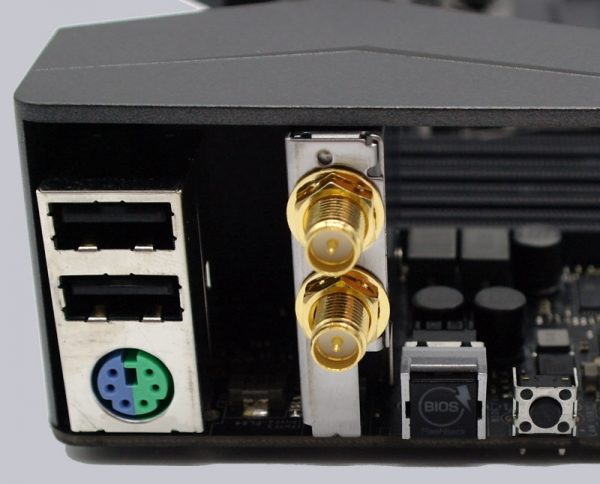
Expansion cards …
The motherboard offers four PCI Express 3.0 x16 slots for AMD CrossFireX or nVidia SLI, of which either one or two graphics cards with x16 bandwidth can be connected, or even two graphics cards with x16 bandwidth and one additional graphics cards with x8 bandwidth. In addition to the four PCI Express 3.0 slots, there is also a PCI Express 2.0 x1 slot.
Memory …
The ASRock X299 Taichi can be equipped with up to eight DDR4 modules and is expandable depending upon operating system used (see list) up to maximally 128 GB memory.
Here you can see a picture of the eight DDR4 memory slots with Quad Channel support:
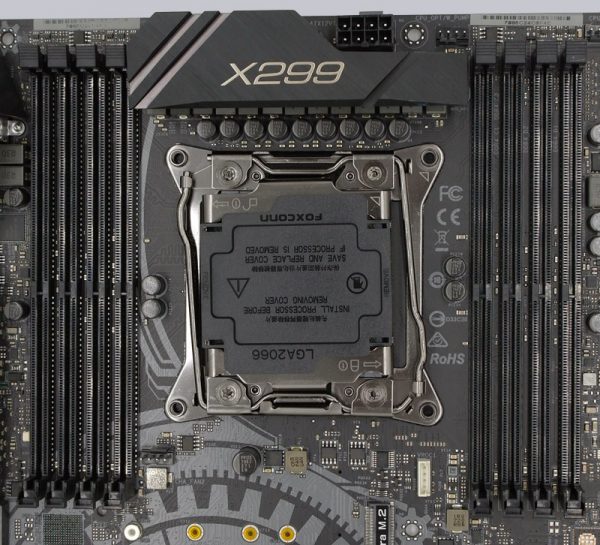
The Intel LGA2066 motherboard supports DDR4 memory modules and can be optimized in the BIOS for DDR4-2666 Quad Channel modules with an Intel Skylake-X processor. The UEFI offers the selection from DDR4-1200 up to DDR4-4400. Higher clock-rates are possible with BCLK overclocking.
Thanks to XMP support (Extreme Memory Profiles), XMP memory modules are set correctly with one mouse click in the UEFI and of course there are far more memory adjustments and more OC-options, but more on that later. Before buying the RAM, you should check the officially supported RAM modules at the ASRock memory support page.
Hard disk drive connectors …
The ASRock X299 Taichi offers a total of ten angled SATA3 ports, two of them by the ASMedia ASM1061 chip.
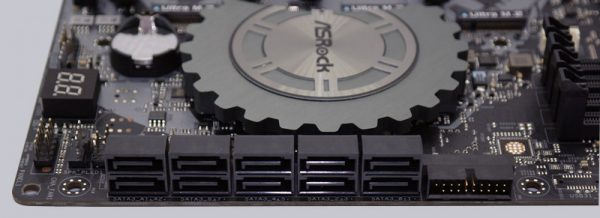
The SATA3 ports are supporting RAID 0, RAID 1, RAID 5, RAID 10, NCQ, AHCI and the Hot Plug function in AHCI mode (AHCI stands for Advanced Host Controller Interface and can/should be selected in the UEFI, especially when using SSDs). Thanks to the UEFI BIOS also drives with more than 2 TB for the installation of Windows 10, Windows 8.1 or Windows 7 x64 can be installed. Installing the drivers was absolutely no problem with Windows 10 and the Windows 10 installation was done very quickly. But even Windows 7 could be installed without any problems.
The RAID drivers can be installed via the Easy RAID Installer point in the UEFI, are supplied on DVD for 32-bit / 64-bit Windows 7, Windows 8 and Windows 10 and are currently available for download on the ASRock support page, whereby the Windows 10 installation is currently preferred.
USB and FireWire …
The ASRock X299 Taichi ATX panel has four USB 3.0 Type-C ports (USB 3.1 Gen1), two USB 2.0 ports and two USB 3.1 Gen2 ports. The picture shows the USB 3.1 Type-A in the middle and an USB 3.1 Type-C at the bottom (can be inserted in both directions).
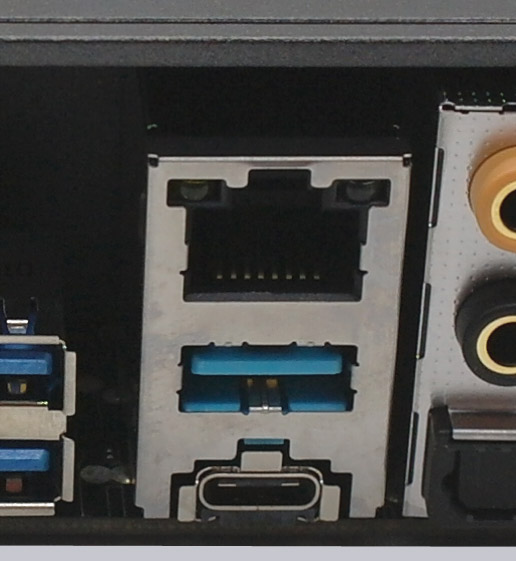
Internally there are two more USB 2.0 connectors for up to four optional USB 2.0 ports, as well as two USB 3.0 connectors for up to four optional USB 3.0 ports. The 20-pin connector can be connected either to an optional USB3.1 Gen1 front panel or to an enclosure with USB3.1 Gen1 support.
Network …
The ASRock X299 Taichi has been equipped with an Intel I211AT and an Intel I219V, through which the 10/100/1000 network ports are realized on the ATX panel. The LAN ports are WoL-capable, offer LAN cable detection, support energy efficient Ethernet according to the 802.3az standard, PXE and more. Additionally the ASRock X299 Taichi has onboard WLAN 2,4/5 GHz IEEE 802.11a/b/g/n/ac with up to 433 Mbps transfer rate as well as Bluetooth 4.2/3.0 + High Speed Class II.
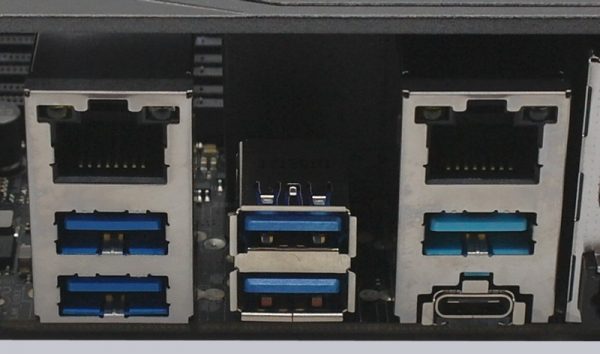
Sound …
The ASRock X299 Taichi motherboard is equipped with the ALC1220 audio codec with content protection, 120dB SNR DAC, TI NE5532 Premium Headset Amplifier and Purity Sound 4, which supports 7.1 surround sound at the internal front panel audio connector and has analog output over 5x 3.5mm connectors on the ATX panel. Additionally, there is an optical SPDIF digital output and premium Blu-Ray audio support. So most users do not need to buy an additional sound card with digital outputs.
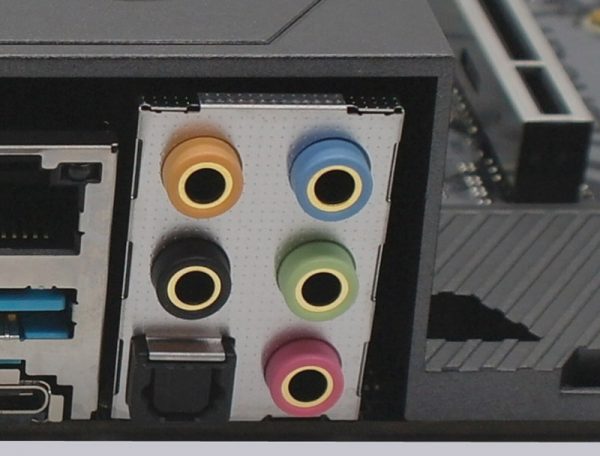
ATX back panel connectors …
From left to right you can see 1x PS/2 connector for PS/2 keyboard or PS/2 mouse and 2x USB 2.0, Clear CMOS button, two WiFi antenna connectors, the ASRock BIOS flashback button, RJ45 Gigabit LAN and 2x USB 3.0, 2x USB 3.0, RJ45 Gigabit LAN and 1x USB 3.1 type-A port and 1x USB 3.1 type-C port and optical SPDIF output as well as 5x 3.5mm jacks for the sound.

Test System …
Now we come to the Intel LGA 2066 CPU socket.
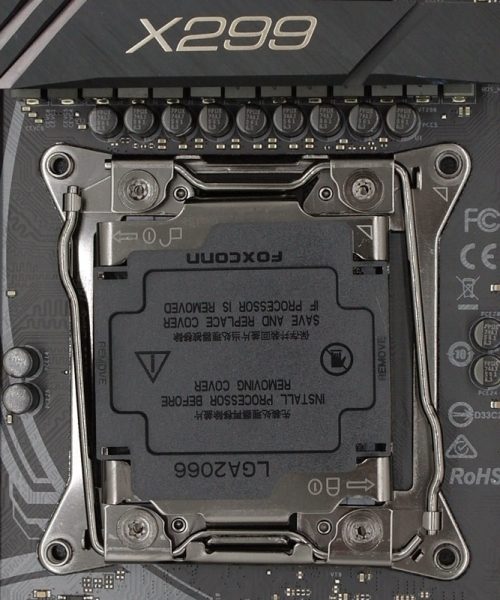
Here you can see the Intel Core i9-7900X CPU in the ASRock X299 Taichi motherboard and four DDR4 modules from Crucial. In order to offer the Intel LGA 2066 CPU a high memory throughput, we used four Crucial Ballistix Sport DDR4 2666 16 GB BLS16G4D26BFSB modules.
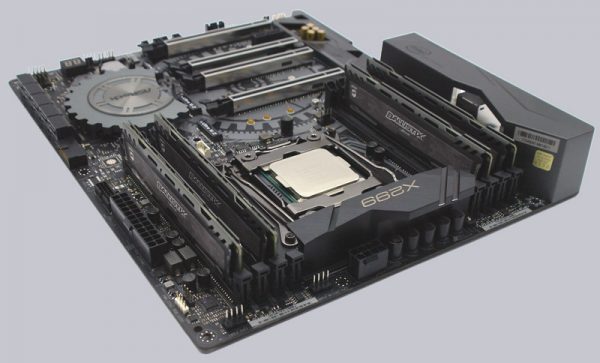
Intel Skylake-X with 28 or 55 PCIe Lanes processors support the Quad Channel Mode, Intel processors with 16 PCIe Lanes only support the Dual Channel Mode. Four of the eight possible memory modules are used on the Intel X299 motherboard to get Quad Channel support with the Intel Core i9-7900X CPU.
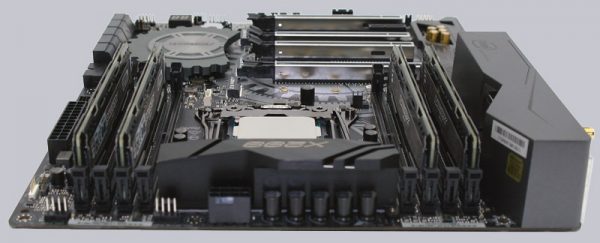
For the previous threadripper ASRock X399 Taichi Mainboard Test we ordered the Arctic Freezer 33 TR Cooler from ARCTIC, which is also suitable for the Intel LGA 2066 processors.
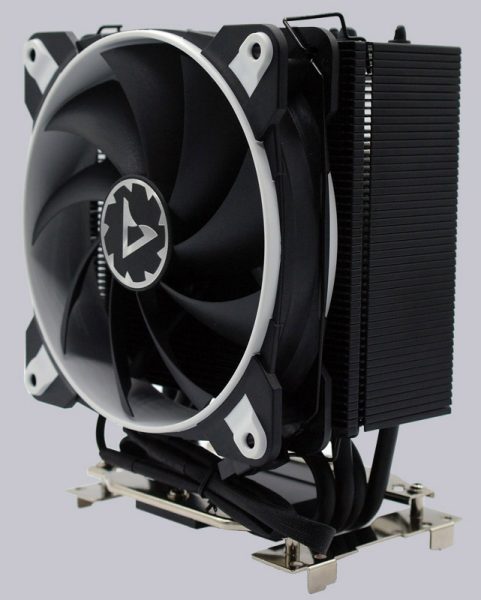
Here you can see the Intel LGA 2066 test system including Arctic Freezer 33 TR cooler, MSI Radeon R9 280 graphics card and Icy Dock MB171SP-B Turbo Swap Swap change frame for quick replacement of the SSD and HDD.
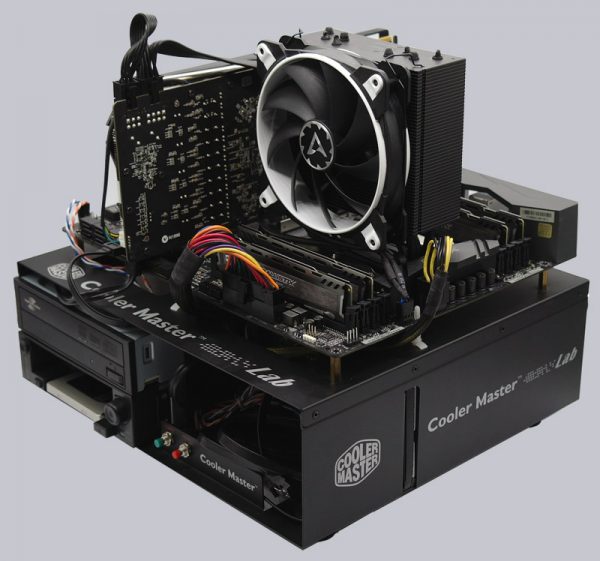
As you can see on the thermal image of the PC system, the Intel X299 chipset remains pleasantly cool and can’t reach the graphics card temperature.
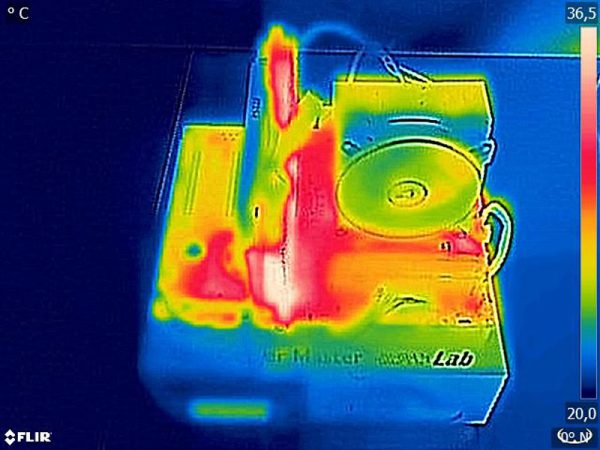
This is how the 10-core (20 threads) of the Intel Core i9-7900X CPU in the Windows 7 task manager at Prime95 full load look like.
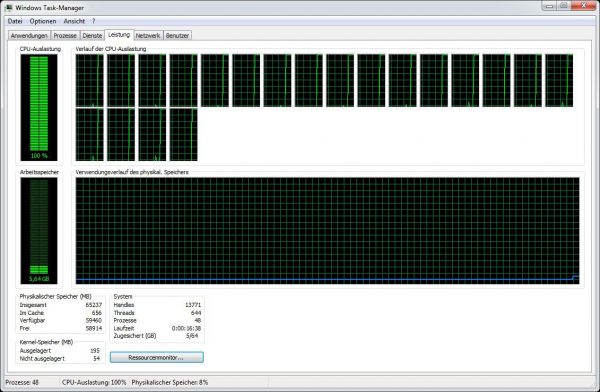
ASRock X299 Taichi BIOS and Overclocking …

